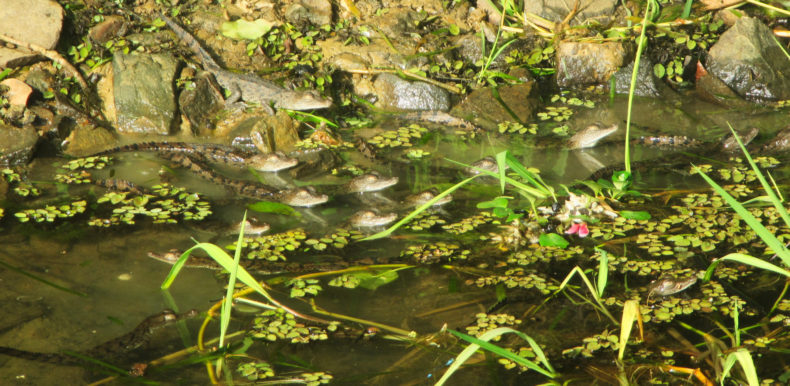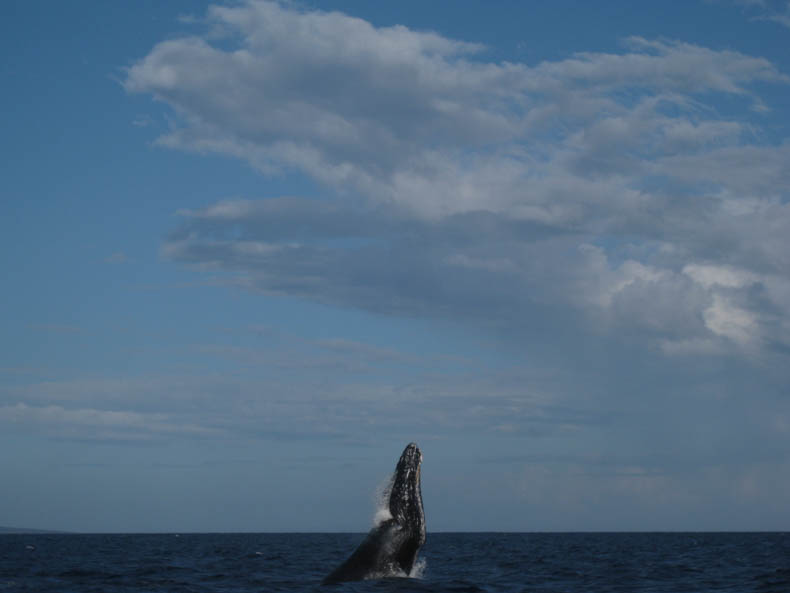The crocodiles should not be a problem. Yes, the population has spiked after being placed under protection, and there have been some attacks recently. But those attacks tend to happen when somebody steps right into the water. The crocs all hang out in the shallows. Stay out of the water and you should be fine. So said the team of forest rangers at the Smithsonian Tropical Research Institute.
Diana Sharpe looked down at her mesh beach seine—the big, soft net she would use to drag across the water just off the beach and catch the little shallow-water fish for sampling. She looked over at her little tin boat with its outboard engine.
“We just tried to basically be very vigilant. We saw lots of crocodiles, but if we came to a spot where we were planning to sample and we saw footprints or evidence of crocodiles we would leave and try another spot,” says Sharpe.
Gatun Lake, which comprises 33 of the 77 kilometres of the Panama Canal, has a peacock bass problem. The locals don’t see it as a problem—even if they happen to know it’s not native they defend its value as a great sport fish—but it’s the kind of apex predator the Panama Canal region had never seen. That is, until 1967, when a business man’s pond, stocked with a hundred of the South American fish for his employees’ enjoyment on weekends, overflowed during a heavy rain. Little juvenile peacock bass escaped into the Chagres River and from there into Lake Gatun. Continue reading




 December 26 – 30, 2016
December 26 – 30, 2016
